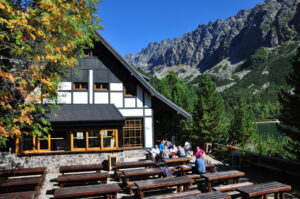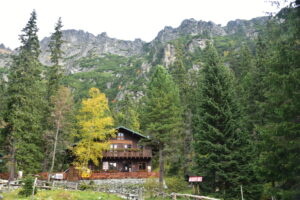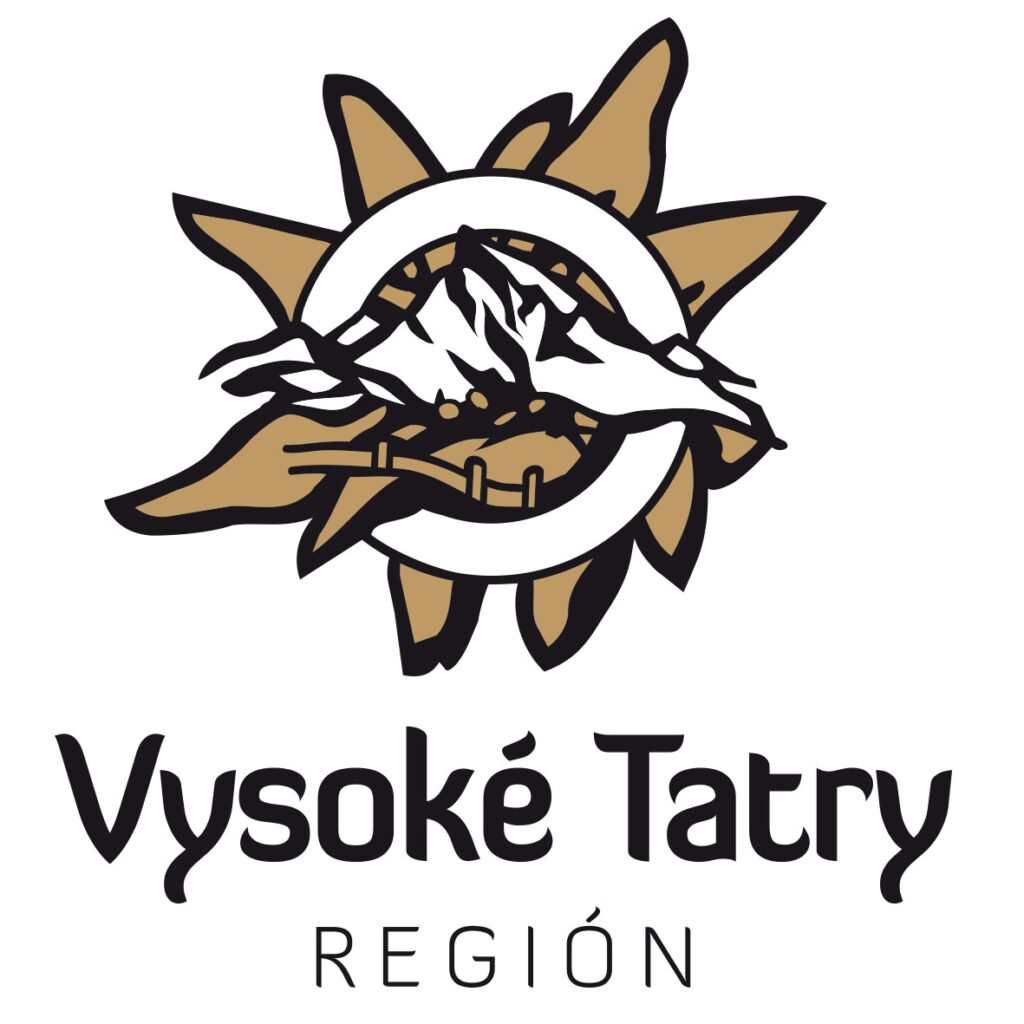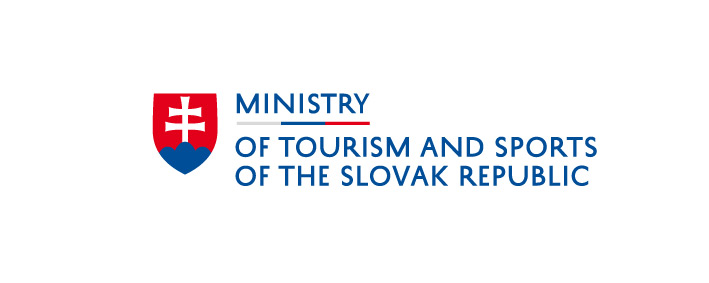A stopover location and a final destination, refuge in any weather
The chalets in the Tatras are considered to be final destinations for many tourists or just a stopover for others who make longer hiking trips. They offer cosy warmth and tasty refreshments that are usually carried on the backs of mountain load bearers. Do you know which chalet is the oldest one and which one is the highest one?
A small hut built on Starolesnianska Poľana (clearing) in 1865 was the first chalet in the Tatras. To this day, it is named after the initiator of the construction (Ján Juraj Rainer, the former tenant of the Starý Smokovec baths) and is a national monument. The tiny stone hut does not provide accommodation, but you can find refreshments there and it also features an exhibition of mountain load bearing and hiking in the interior. The Twelfth Day is celebrated with a snow nativity scene at Rainer’s chalet.
The most common hiking trip starting point: Starý Smokovec – Hrebienok
The Chalet below Mt Rysy (2,250 m above sea level) is the highest located. It is the chalet closed for safety reasons in winter. It had been destroyed several times by avalanches, so the original stone cottage underwent a radical renovation from 2010 to 2013.
The most common hiking trip starting point: Popradské pleso
Téry’s chalet in Malá Studeá dolina (valley) is the highest-located chalet open all year round. It is also named after the initiator of its construction – doctor Edmund Téry, who used to visit the Tatras around 1899 while treating miners from Banská Štiavnica. If you are physically fit, you can get to Veľká Studená dolina and Zbojnícka chalet through Priečne sedlo (saddle) via a trail secured with chains. The area is typical for the highest precipitation in Slovakia, mostly in the form of snow, making the valley a favourite destination for ski tourers in winter. It also features over 20 glacial lakes – Tatra tarns.
The most common hiking trip starting point: Starý Smokovec – Hrebienok
The Sliezsky dom mountain hotel, built at an altitude of 1,670 metres below the highest peak of the Tatras and the entire Carpathians – Mt Gerlachovský štít, is also top in something – it is the highest-located hotel in Slovakia. In 1995, Pope John Paul II visited tranquil, easily accessible Velická dolina (valley), and he blessed a wooden cross near the mentioned mountain hotel, where there is now a memorial plaque dedicated to the Holy Father.
The most common hiking trip starting point: Tatranská Polianka
The Chalet below Mt Solisko built near the first ski lift in Czechoslovakia in 1944 is the first one from the west. It used to serve only during the winter for a long time, but currently, it is open all year round. In summer, it is sought after by tourists heading to Furkotská dolina (valley) – to Wahlenbergove plesá (tarns) and to Bystrá lávka (saddle), in winter, mainly skiers and ski tourers come here. The summit of Mt Predné Solisko (2,117 m), after which the chalet is named, is the only peak in the Tatras accessible all year round, even during the winter closure of hiking trails.
The most common hiking trip starting point: Štrbské Pleso
Plesnivec is the easternmost chalet located at the foot of the Belianske Tatra Mts., which, unlike the High Tatras made of granite, is a limestone mountain range. The rare Alpine edelweiss protected by law grows only there. A marked hiking trail runs from the chalet around Biele plesá (tarns) to the Chalet at Zelené pleso (tarn), which is one of the most visited chalets due to its unique scenery and easy accessibility. Legend has it that the tarn was coloured by a green gem that fell from majestic Mt Jastrabia veža towering above this chalet, which was called Brnčala’s chalet (“Brnčalka”) for some time.
The most common hiking trip starting point: Tatranská Kotlina/Biela Voda
The original Majláth’s chalet stood on the shore of Popradské pleso (tarn) from 1879 to 1880, when it burned down. Instead of it, the new “Majláthka” was built in 2010, which is the youngest chalet in the High Tatras. One can reach it and the adjacent mountain hotel near Popradské pleso (tarn) on foot from Štrbské Pleso in 1 hour and 20 minutes, or along the asphalt road from the Tatra Electric Railway stop in Popradské Pleso in an hour. It is one of the most visited places in the entire Tatras, also thanks to the nearby symbolic cemetery – a unique memorial place in an arolla pine limbo grove below the rock wall of Mt Ostrva.
Bilík’s chalet is one of the easiest chalets to reach as it takes only 5 minutes to walk there from Hrebienok (accessible by a funicular/along a hiking trail or an asphalt road from Starý Smokovec). If you continue along Tatranská magistrála (arterial trail), the longest hiking trail in the Tatras, you will pass by Rainer’s chalet and not miss Zamkovský’s chalet at the beginning of Malá Studená dolina (valley). From there, you can walk to Téry’s chalet or through less difficult terrain to Skalnatá chalet, which is accessible on foot but is also close to a cable car operating from Tatranská Lomnica in winter and summer. An overhanging boulder where visitors to Skalnatá dolina (valley) sought shelter in bad weather in the 19th century was the predecessor of the chalet.
Each chalet has its own history and remembers many stories. If you visit them, you will surely collect beautiful memories that will leave a unique “genius loci” in you. The chalets were built in harsh mountain conditions to become a refuge in bad weather, a venue for many meetings and a place ready for various demands of tourists throughout the year. Although comfort in chalets is growing – let’s not forget that almost all materials are carried by mountain load bearers there, making everyday operation much more demanding than at lower altitudes.
Photo: Ivan Bohuš ml.
Source: Katarína Bohušová









